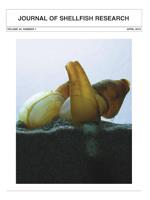Studies about individual growth for geoducks are relevant because they allow an understanding of biomass production and its maintenance in the population. This study presents the first growth curves for Panopea globosa from the southwestern Baja California Peninsula. Geoduck samples were collected from November 2006 to October 2007 in Bahía Magdalena (n = 392). The morphological data for live individuals were obtained and their ages were estimated from the right shell by counting band growth from a thin section cut from the hinge plate region. The length-at-age data were fitted to six growth models—Gompertz, Johnson, von Bertalanffy growth model (VBGM), generalized VBGM, Richards, and Schnute—using a negative log-likelihood function. The models were analyzed using multimodel inference to select the best candidate growth model based on the Akaike information criterion. The results indicate the size structure from Bahía Magdalena has a unimodal shape and shows negative allometric growth in the relationship between shell length and total weight (b = 2.4). Shell lengths varied from 93–206 mm and total weight ranged from 332–2824 g. Age validation was based on the marginal increment ratio, and suggested the growth line and band were deposited annually. Growth line formation occurred annually between January and April, and the growth band was deposited from June to December. A dominance of older year classes, from 13–22 y, was noted along with an estimated maximum age of 47 y. Based on multimodel inference, the Gompertz growth model was the best candidate for estimating growth for P. globosa. The estimated parameters included an asymptotic size of 167.51 mm, the rate at which the asymptotic size was reached was 0.218, and the age at size 0 was 0.003. These growth parameters for P. globosa from the southwestern of the Baja California Peninsula show the length at age in this region is greater than in the central Gulf of California, suggesting that management rules must be based regionally.
How to translate text using browser tools
1 March 2015
Modeling Geoduck Growth: Multimodel Inference in Panopea globosa from the Southwestern Baja California Peninsula, Mexico
Sergio Scarry González-Peláez,
Enrique Morales-Bojórquez,
Daniel Bernardo Lluch-Cota,
Salvador Emilio Lluch-Cota,
J. Jesús Bautista-Romero
ACCESS THE FULL ARTICLE

Journal of Shellfish Research
Vol. 34 • No. 1
March 2015
Vol. 34 • No. 1
March 2015
age
Akaike information criteria
geoduck
growth
negative log likelihood
Panopea globosa




